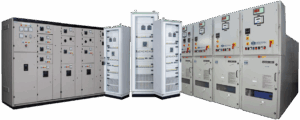One of the most prevalent and potentially harmful problems that businesses and homeowners deal with is water leaks. Over time, even a tiny leak that goes unnoticed can cause serious water damage, the growth of mold, and higher utility costs. Finding leaks early on is essential for water conservation, property protection, and lowering repair expenses. This guide explores the significance of detecting water leaks, typical leak indicators, and the technologies that are used to do so.
Why Water Leak Detection is Essential
Water leak detection that go unnoticed can cause foundational problems, wall and floor deterioration, and structural damage to your property. In addition to causing physical harm, leaks can result in expensive water bills and the annual waste of thousands of gallons of water. Early detection is beneficial.
- Prevent Property Damage
Addressing leaks early minimizes the risk of structural damage, mold growth, and costly repairs. - Save Money
Quick detection reduces water waste, lowering your monthly utility bills and preventing the need for expensive renovations. - Conserve Water
In an era of water conservation, fixing leaks promptly helps contribute to environmental sustainability. - Maintain Health and Safety
Leaks can create damp environments that encourage mold and mildew growth, posing health risks like respiratory problems and allergies.
Common Signs of Water Leaks
Being vigilant about the signs of water leaks can help you address problems before they escalate. Watch out for the following indicators:
- Unexplained Increase in Water Bills
A sudden spike in your water usage could indicate a hidden leak. - Visible Water Stains
Discoloration on walls, ceilings, or floors often signals a leak within the plumbing system. - Musty Odors
Persistent damp or musty smells may indicate mold growth due to a hidden leak. - Reduced Water Pressure
A noticeable drop in water pressure could be caused by a leak in the pipes. - Pooling Water or Puddles
Standing water or unexplained wet spots on your property can be a sign of leaking pipes or fixtures.
Advanced Water Leak Detection Technologies
Modern water leak detection employs advanced tools and techniques to pinpoint leaks quickly and accurately, even in hard-to-reach areas. Here are some of the most commonly used methods:
- Acoustic Leak Detectors
These devices use sound waves to detect the noise created by water escaping from a pipe. - Infrared Cameras
Thermal imaging can detect temperature variations caused by water leaks behind walls or under floors. - Moisture Meters
These devices measure the moisture content in materials like drywall and wood, helping locate hidden leaks. - Video Pipe Inspections
A small camera is inserted into the plumbing system to visually inspect and identify leaks or blockages. - Smart Leak Detectors
These devices are installed in your home and alert you to potential leaks through your smartphone, allowing for real-time monitoring.
DIY vs. Professional Water Leak Detection
More complicated leaks necessitate professional assistance, but minor ones, like a dripping faucet, can frequently be fixed with simple tools and a little do-it-yourself skills. Experts possess the knowledge and tools necessary to find leaks without causing additional harm to your property. Employing a professional has the following advantages:
- Accurate Diagnosis
Professionals can identify the exact location and cause of the leak, even in hidden or hard-to-access areas. - Comprehensive Solutions
Beyond detection, professionals provide repair services to ensure the problem is fully resolved. - Minimized Damage
Advanced tools allow for non-invasive detection methods, preserving your property’s structure.
Steps to Take After Detecting a Water Leak
- Turn Off the Water Supply
Immediately shut off the main water valve to prevent further leakage. - Contact a Professional
Call a licensed plumber or leak detection specialist to assess the situation and provide repairs. - Document the Damage
Take photos or videos of the affected areas for insurance purposes. - Dry the Area
Use fans, dehumidifiers, and towels to remove moisture and prevent mold growth while awaiting professional assistance. - Inspect for Secondary Damage
Check nearby areas for signs of water damage, such as warped floors or peeling paint.
Preventing Future Water Leaks
Taking proactive steps can reduce the likelihood of leaks in the future. Consider the following preventive measures:
- Regular Plumbing Inspections
Schedule annual inspections to ensure your plumbing system is in good condition. - Install Smart Leak Detectors
These devices monitor your water system and provide alerts for potential leaks. - Maintain Water Pressure
Excessive water pressure can strain pipes, leading to leaks. Install a pressure regulator if necessary. - Protect Pipes in Cold Weather
Insulate pipes to prevent freezing and bursting during winter months. - Replace Old Pipes
If your home has aging plumbing, consider upgrading to modern materials like PEX or PVC.
Short FAQ About Water Leak Detection
1. How much water can a small leak waste?
A small drip can waste up to 20 gallons of water per day, adding up to over 7,000 gallons annually.
2. What is the average cost of professional water leak detection?
Professional leak detection typically costs between $150 and $500, depending on the complexity of the job.
3. Can water leaks cause structural damage?
Yes, prolonged leaks can weaken the foundation, walls, and floors, leading to significant structural issues.
4. How often should I check for water leaks?
It’s recommended to check for leaks annually and monitor water bills for unusual spikes.
5. Are smart leak detectors worth it?
Yes, smart detectors provide real-time alerts, helping you catch leaks early and avoid costly damage.
Conclusion
Finding water leaks is crucial for preserving water, safeguarding your property, and preventing expensive repairs. You can stop long-term damage and deal with issues quickly by being aware of the telltale signs of leaks and utilizing contemporary detection technologies. Investing in leak detection solutions, whether through expert services or smart home appliances, is a proactive step toward protecting your house or place of business. To keep your property safe and secure, act now rather than waiting for a minor leak to grow into a bigger problem.






